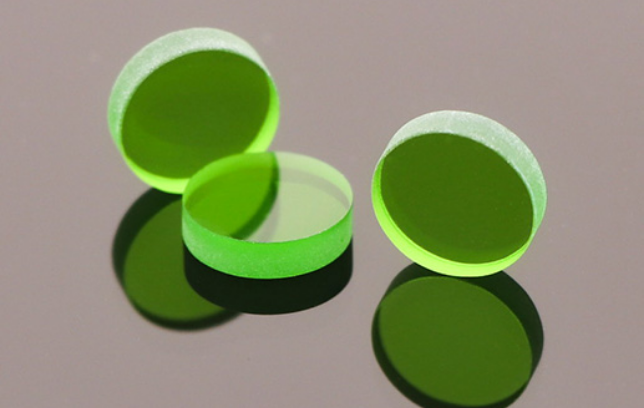Applications of Optical Color Glass Filters
Sep. 28, 2023
Optical color glass filters are essential components in various industries and scientific fields where the manipulation of light and its properties is crucial. These filters selectively transmit or absorb specific wavelengths of light, allowing for a wide range of applications. In this comprehensive exploration, we will delve into the diverse applications of optical color glass filters, highlighting their significance in science, technology, and everyday life.
1. Photography and Imaging
Optical color glass filters play a fundamental role in photography and imaging. They are used to control and enhance the quality of images by adjusting color balance, reducing glare, and managing exposure. Common filter types include:
a. Neutral Density (ND) Filters: These filters reduce the amount of light entering the camera lens, allowing photographers to use wider apertures or slower shutter speeds, creating effects like long exposure shots and blurring motion.
b. Polarizing Filters: Polarizers minimize reflections and glare, making them invaluable for shooting through glass or water. They also enhance color saturation and contrast in outdoor photography.
c. Color Correction Filters: These filters help correct color temperature discrepancies in different lighting conditions, ensuring accurate color reproduction.
2. Astronomy
In astronomy, optical color glass filters are used to enhance the visibility of celestial objects and reduce the effects of light pollution. Astronomers employ specialized filters like:
a. Narrowband Filters: These filters isolate specific emission lines from celestial objects, allowing astronomers to study the chemical composition and properties of stars, nebulae, and galaxies.
b. Solar Filters: Solar observation requires filters that block most of the sun's intense light while allowing only a narrow range of wavelengths to pass through, ensuring safe solar viewing.
3. Spectroscopy
Spectroscopy involves the study of the interaction between light and matter. Optical color filters enable scientists to select specific wavelengths for analysis in various spectroscopic techniques, including:
a. Absorption Spectroscopy: Filters are used to isolate and measure the absorption spectra of substances, aiding in chemical analysis and material characterization.
b. Fluorescence Spectroscopy: Filters are employed to separate excitation and emission wavelengths, enhancing the sensitivity and specificity of fluorescence measurements.
4. Colorimetry
Colorimetry is the science of quantifying and characterizing colors. Optical color glass filters serve as standard references in colorimetry, helping to calibrate and verify color measurement devices like spectrophotometers and colorimeters. They are essential in industries such as textiles, printing, and food production for quality control and color matching.
Optical Glass Filter Color Filter
5. Medical Imaging
In medical imaging, optical color glass filters are utilized to enhance contrast and visualization in various imaging techniques:
a. Fluorescence Microscopy: Filters are employed to excite and capture specific fluorescence signals from biological samples, enabling the visualization of cellular structures and molecules.
b. Endoscopy: Filters help eliminate unwanted wavelengths and optimize the color and contrast of images obtained during endoscopic procedures.
6. Remote Sensing
Remote sensing relies on optical color glass filters to capture and analyze data from satellites, aircraft, and drones. Filters are used for:
a. Vegetation Analysis: Multispectral and hyperspectral filters can identify and monitor plant health, crop yields, and environmental changes.
b. Oceanography: Filters enable the detection of water properties, such as chlorophyll concentration, water temperature, and dissolved organic matter, for studying ocean ecosystems.
7. Display Technologies
Modern display technologies, including LCD and OLED screens, utilize optical color glass filters to control color accuracy, contrast, and brightness. These filters ensure that electronic displays produce vibrant and accurate images and are essential in devices like smartphones, tablets, and televisions.
8. Optical Communications
Optical color glass filters are integral components in optical communication systems. They enable the manipulation of light signals in optical fibers, allowing for:
a. Wavelength Division Multiplexing (WDM): Filters are used to separate and combine different wavelengths of light, increasing data transmission capacity in fiber-optic networks.
b. Signal Filtering: Filters help eliminate unwanted noise and interference, ensuring reliable data transmission.
9. Security and Authentication
Optical color glass filters are employed in security features and authentication methods to prevent counterfeiting and forgery. Examples include:
a. Banknotes: Filters with specific optical properties are used in banknote printing to create security features that are difficult to reproduce.
b. Authentication Labels: Filters may be incorporated into holographic labels, ID cards, and passports to confirm their authenticity.
10. Environmental Monitoring
Environmental scientists use optical color glass filters for monitoring and analyzing environmental factors:
a. Water Quality Monitoring: Filters are employed to measure parameters like turbidity, dissolved organic matter, and nutrient concentrations in water bodies.
b. Air Quality Analysis: Filters help analyze particulate matter in the atmosphere, aiding in air quality assessments and pollution control.
Conclusion
Optical glass filters are indispensable tools across a wide spectrum of industries and scientific disciplines. Their ability to selectively transmit or absorb specific wavelengths of light makes them essential for tasks ranging from enhancing the quality of images in photography to enabling groundbreaking scientific discoveries in spectroscopy and astronomy. As technology continues to advance, the applications of optical color glass filters are likely to expand further, contributing to improvements in diverse fields and our daily lives.
If you want to know more information about windows, please click on the image below to get a free quote:
Previous: Learn about infrared thermometers




















